Somatostatin-Positive Interneurons Contribute to Seizures in SCN8A Epileptic Encephalopathy
- PMID: 34544834
- PMCID: PMC8570835
- DOI: 10.1523/JNEUROSCI.0718-21.2021
Somatostatin-Positive Interneurons Contribute to Seizures in SCN8A Epileptic Encephalopathy
Abstract
SCN8A epileptic encephalopathy is a devastating epilepsy syndrome caused by mutant SCN8A, which encodes the voltage-gated sodium channel NaV1.6. To date, it is unclear if and how inhibitory interneurons, which express NaV1.6, influence disease pathology. Using both sexes of a transgenic mouse model of SCN8A epileptic encephalopathy, we found that selective expression of the R1872W SCN8A mutation in somatostatin (SST) interneurons was sufficient to convey susceptibility to audiogenic seizures. Patch-clamp electrophysiology experiments revealed that SST interneurons from mutant mice were hyperexcitable but hypersensitive to action potential failure via depolarization block under normal and seizure-like conditions. Remarkably, GqDREADD-mediated activation of WT SST interneurons resulted in prolonged electrographic seizures and was accompanied by SST hyperexcitability and depolarization block. Aberrantly large persistent sodium currents, a hallmark of SCN8A mutations, were observed and were found to contribute directly to aberrant SST physiology in computational modeling and pharmacological experiments. These novel findings demonstrate a critical and previously unidentified contribution of SST interneurons to seizure generation not only in SCN8A epileptic encephalopathy, but epilepsy in general.SIGNIFICANCE STATEMENTSCN8A epileptic encephalopathy is a devastating neurological disorder that results from de novo mutations in the sodium channel isoform Nav1.6. Inhibitory neurons express NaV1.6, yet their contribution to seizure generation in SCN8A epileptic encephalopathy has not been determined. We show that mice expressing a human-derived SCN8A variant (R1872W) selectively in somatostatin (SST) interneurons have audiogenic seizures. Physiological recordings from SST interneurons show that SCN8A mutations lead to an elevated persistent sodium current which drives initial hyperexcitability, followed by premature action potential failure because of depolarization block. Furthermore, chemogenetic activation of WT SST interneurons leads to audiogenic seizure activity. These findings provide new insight into the importance of SST inhibitory interneurons in seizure initiation, not only in SCN8A epileptic encephalopathy, but for epilepsy broadly.
Keywords: depolarization block; epilepsy; interneuron; ion channel; seizure; voltage-gated sodium channel.
Copyright © 2021 the authors.
Figures
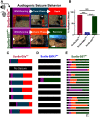
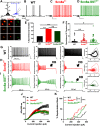
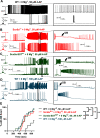
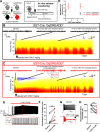
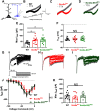

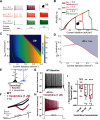
References
Publication types
MeSH terms
Substances
Grants and funding
LinkOut - more resources
Full Text Sources
Medical
Molecular Biology Databases
